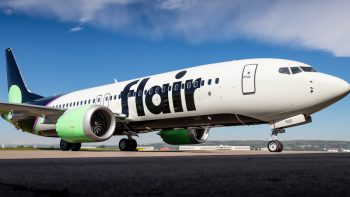
While travel is beginning to resume globally, some regions are recovering at a faster rate while others are lagging behind. New research from the World Travel & Tourism Council (WTTC) reveals the gaps in travel recovery in five markets around the world, including the U.K., the Caribbean, North America, Europe, and the Middle East.
The Caribbean

The Caribbean market is “recovering at a faster rate than any other region in the world,” according to the WTTC, with the sector’s contribution to GDP expected to rise to more than 47 per cent this year, compared to the global average of 30.7 per cent.
That’s great news for a region where travel is a primary economic driver.
The WTTC says the Caribbean is benefitting from more relaxed restrictions, compared to others around the world, as well as low infection rates of COVID-19. Both factors are boosting international travel spending and aiding the region’s economic recovery.
The Caribbean region can expect a year-on-year increase of 47.3 per cent, representing an increase of nearly USD $12b, driven by both international and domestic travel spending.
However, the WTTC notes that while the Caribbean is recovering faster than other regions, this is still below the region’s performance in 2019, a record year for the sector, when Travel & Tourism represented more than 14 per cent of the region’s GDP, contributing more than USD $58b to its economy.
The WTTC also said that Travel & Tourism’s contribution to the economy could see continued growth in 2022 with a predicted year-on-year rise of 28 per cent in 2022, a boost of USD $10b.
North America

Research from the WTTC also revealed that the North America’s Travel & Tourism sector is recovering at an unexpectedly high rate.
Travel is expected to contribute 38 per cent to North America’s GDP in 2021, significantly higher than the global average of 30.7 per cent. The WTTC attributes this growth to successful vaccination rollouts in North American countries such as Canada, the U.S. and Puerto Rico, as well as recently relaxed travel restrictions, which are aiding in recovery in the second half of 2021.
Before the pandemic, North America’s Travel & Tourism sector’s contribution to GDP was nearly USD $2.2 trillion, but fell to nearly half: USD $1.25 trillion when international travel came to a halt.
The latest research shows that, at the current rate of recovery, North America’s Travel & Tourism sector will contribute USD $1.7 trillion to GDP in 2021, representing a year-on-year growth of 38 per cent.
WTTC data also reveals the region could see a year-on-year rise of 26.4 per cent in 2022, bringing the sector’s contribution to the North American economy back to pre-pandemic levels.
Europe

On the other hand, the WTTC’s research is showing that Europe’s Travel & Tourism sector is lagging behind, with a predicted growth of only 23.9 per cent in 2021 compared to the global average of 30.7 per cent.
The WTTC attributes this low number to travel restrictions throughout the year, particularly in the first half of 2021, which continued to hinder the sector’s recovery.
Although far from pre-pandemic levels, the growth of Europe’s Travel & Tourism sector has seen a slight rise due to a successful vaccination rollout, and intra-European mobility, which was supported by the early JUL launch of the EU Digital COVID Certificate. However, as borders are closed internationally, Europe has struggled to recover.
However, as vaccination rates for Europeans continue to rise, the WTTC predicts a strong rebound of international spending in 2022 of 77.2 per cent.
The U.K.
Contrast the European experience in travel recovery with the U.K.’s. WTTC’s research says that travel may recover by a third in 2021 in the U.K. - about 10 per cent greater than EU recovery. It’s about on par with the global average for this year, and looking at even better growth in 2022.
While doing better than the EU it just ‘exited’, the U.K.’s performance was criticized, with analysts attributing lackluster recovery to the country’s “destructive traffic light system,” despite its successful vaccine rollout.
The research shows the U.K.’s recovery has been spurred on by a boom in domestic travel, set to experience a year on year rise of 49 per cent in 2021.
It hasn’t been enough to fully counter the big drop in international travel to the country, which analysts predict has declined this year by nearly 50 per cent from 2020, one of the worst years on record, and “one of the worst performing countries in the world” for recovery of its international travel market.
The WTTC predicts that’s likely to turnaround by next year, rising by 53 per cent in 2022.
The Middle East

Research from the WTTC also shows that the Middle East’s Travel & Tourism sector is also recovering more slowly than the global average, with a projected growth of 27.1 per cent this year compared to the average of 30.7 per cent world wide.
According to the WTTC, slow vaccination rates in some countries in the region, as well as restrictions on international travel in key markets, have hindered travel recovery in the Middle East.
However, data showed that the Middle East’s Travel & Tourism growth is predicted for a similar year-on-year rise of 28.1 in 2022, which represents a boost of USD $47b to its GDP. This predicted growth can partially be attributed to recent changes in international travel restrictions, which are expected to increase international travel to the region.
The WTTC has yet to publish predicted recovery rates for Asia-Pacific, South America, Central America, or Africa. However, it did reveal the negative impact of the pandemic on travel in these regions in 2020, which includes drops in Asia-Pacific (53.7 per cent), Latin America (41.1 per cent), and Africa (49.2 per cent).





